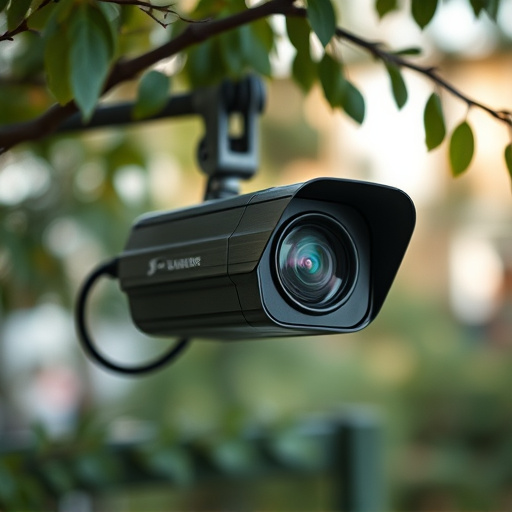Security technology has evolved with advanced light-based decoy systems, featuring most realistic looking security decoys that mimic real cameras and deter intruders. These innovative solutions combine precise engineering and lifelike replicas, revolutionizing surveillance methods while maintaining aesthetic appeal. By strategically positioning these decoys, it becomes challenging for criminals to differentiate between fake and real security gear, providing extra time for alarm systems to respond.
Unveiling the latest in security technology, this article explores disguised camera identification through light testing. From advanced decoy technologies to the art of camera concealment, we delve into how visual disguises are revolutionizing surveillance. We examine practical applications and future-proofing tactics, focusing on the most realistic-looking security decoys available. Learn how these innovative solutions enhance security while evading detection.
- Unveiling Advanced Decoy Technologies
- Lighting Up Security: Visual Disguises
- Camera Concealment: An Art of Deception
- Testing Realism: Practical Applications
- Future-Proofing Surveillance Tactics
Unveiling Advanced Decoy Technologies
The evolution of security technology has led to a fascinating development in decoy systems, particularly with the introduction of advanced light-based solutions. These cutting-edge security decoys are designed to be the most realistic looking on the market, fooling even the keenest of eyes. By utilizing intricate lighting effects and sophisticated materials, these decoys mimic real cameras with remarkable accuracy, making them an effective deterrent against potential intruders.
The technology behind these advanced decoys involves precise engineering to create lifelike replicas. From the lens to the housing, every detail is carefully crafted to prevent detection. This innovation has revolutionized surveillance methods, offering a game-changing approach to securing sensitive areas. With their realistic appearance, these security decoys provide an efficient solution for those seeking to enhance their protective measures without compromising aesthetics.
Lighting Up Security: Visual Disguises
Security cameras have evolved beyond simple optical sensors, incorporating advanced technologies like heat detection and motion tracking. However, their effectiveness can be neutralized by creative visual disguises. One innovative approach is the use of most realistic looking security decoys, particularly lights designed to mimic camera lenses or other security equipment. These decoys not only deter potential intruders but also provide a psychological barrier, making it harder for criminals to identify and target real cameras.
By integrating subtle lighting effects and strategic positioning, these visual disguises can make it nearly impossible for an untrained eye to distinguish between genuine security gear and fake decoys. This tactical use of light and shadow creates a confusing environment where would-be thieves might hesitate or lose interest, providing valuable time for actual security systems to respond and alert authorities.
Camera Concealment: An Art of Deception
Camera Concealment: An Art of Deception
In the realm of security, camera identification has evolved into a fine art, where deception meets technology. One innovative approach is the use of disguised camera decoys that mimic everyday objects, making it nearly impossible for intruders to discern surveillance equipment. These most realistic-looking security decoys are meticulously designed to blend seamlessly with their surroundings, from life-like fake rocks to cleverly hidden light fixtures. By employing such creative camouflage, security systems can be enhanced without compromising aesthetics or disrupting the natural flow of spaces.
The art of camera concealment involves a delicate balance between functionality and discretion. Skilled craftspeople craft these decoys with an attention to detail that ensures they not only look authentic but also perform their surveillance duties effectively. Whether integrated into landscaping or strategically placed within architectural elements, these disguised cameras offer a game-changing strategy for those seeking advanced security measures without sacrificing visual appeal.
Testing Realism: Practical Applications
The effectiveness of disguised camera identification using lights tests lies in its ability to assess how well security decoys can blend into their environment. To be truly effective, these decoys must appear as realistic as possible, fooling even the most diligent observers. This is where practical applications come into play—testing the realism of security cameras in various settings ensures that they do not become easily identifiable as surveillance equipment. By simulating real-world conditions and observing human behavior, manufacturers can design the most realistic-looking security decoys.
These tests not only verify the visual appeal but also consider other factors like light distribution, reflection, and overall integration with surroundings. When executed successfully, this approach allows for subtle yet powerful monitoring solutions that maintain an air of normalcy. By integrating these undetectable cameras into everyday spaces, organizations can enhance their security measures without compromising aesthetics or disrupting daily activities.
Future-Proofing Surveillance Tactics
As technology evolves, so too do methods of surveillance and security. To stay ahead of potential threats, it’s crucial to incorporate the most realistic-looking security decoys into tactics. These advanced decoys, often disguised as everyday lights or fixtures, offer a cutting-edge solution for future-proofing surveillance. They blend seamlessly into their surroundings, fooling even the most discerning eye, and provide an effective deterrent against unauthorized access or covert filming.
By employing these innovative security measures, organizations can ensure they remain one step ahead of those intending to compromise privacy or security. The use of realistic decoys contributes to a comprehensive strategy that adaptably counters evolving techniques used by individuals seeking to exploit vulnerabilities for malicious purposes.
The integration of advanced lighting technologies in security systems has transformed the landscape of surveillance. By employing sophisticated camera identification methods, such as those tested using disguised camera decoys, we can enhance privacy and deter malicious activities. Moving forward, continuous innovation in visual deception techniques, particularly focusing on creating the most realistic-looking security decoys, will be key to staying ahead in the ever-evolving field of surveillance tactics.
